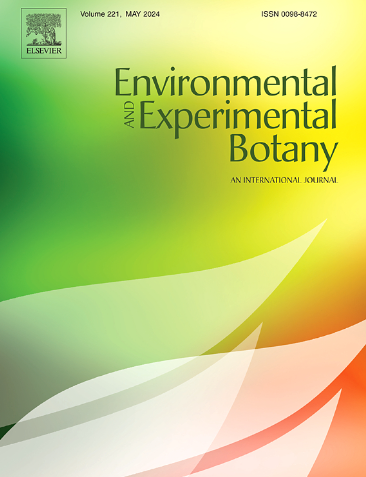两种具有不同生活史特征的针叶树木材形成和非结构性碳水化合物的季节特征
IF 4.7
2区 生物学
Q2 ENVIRONMENTAL SCIENCES
引用次数: 0
摘要
了解树木木材形成和非结构性碳水化合物(NSCs)的动态对于揭示碳分配和储存机制至关重要。虽然温度被广泛认为是温带树木生长启动的关键驱动因素,但空气和土壤温度的相对贡献仍然很少量化。此外,温度在调节木材形成停止中的作用受到了有限的关注。本研究对长白山云杉(Picea koraiensis)和长白落叶松(Larix olgensis)在不同海拔梯度上的年际木材形成进行了监测,并评估了叶片、木质部和韧皮部NSC浓度的季节变化。云杉每增加100 m生长延迟3.3天,落叶松每增加2.5天生长延迟。云杉比落叶松开始生长早,停止生长晚,反映了物种特有的物候策略。生长开始主要受累积热条件驱动,特别是生长度日,而冷度日是唯一与生长停止显著相关的温度相关因素。尽管落叶落叶松和常绿云杉的NSC动态具有不同的季节模式,但两种树种的NSC动员与形成层活动密切同步。淀粉浓度达到全年最低,糖浓度在细胞增大和壁增厚的最大宽度时期达到峰值,表明木质部发育过程中碳利用的生理机制是保守的。这些发现揭示了温度、物候和NSC动态在调节木质部生长和碳分配中的相互作用。通过阐明这些过程,这项研究促进了我们对温带森林如何应对不断变化的气候条件的理解。本文章由计算机程序翻译,如有差异,请以英文原文为准。
Seasonal patterns between wood formation and non-structural carbohydrate in two conifers with distinct life-history traits
Understanding the dynamics of wood formation and non-structural carbohydrates (NSCs) in trees is essential for unraveling mechanisms underlying carbon allocation and storage. While temperature is widely acknowledged as a key driver of growth initiation in temperate trees, the relative contributions of air and soil temperatures remain poorly quantified. In addition, the role of temperature in regulating the cessation of wood formation has received limited attention. In this study, we monitored intra-annual wood formation of Picea koraiensis and Larix olgensis across an altitudinal gradient and assessed seasonal variation in NSC concentrations in leaves, xylem, and phloem in Changbai Mountain. Growth onset was delayed by 3.3 per 100 m increase in altitude for Picea and 2.5 days for Larix. Picea initiated growth earlier and ceased later than Larix, reflecting species-specific phenological strategies. Growth onset was primarily driven by cumulative thermal conditions, particularly growing degree days, whereas cold degree days emerged as the sole temperature-related factor significantly associated with growth cessation. Despite contrasting seasonal patterns of NSC dynamics between deciduous Larix and evergreen Picea, the mobilization of NSCs was closely synchronized with cambial activity in both species. Starch concentrations reached their annual minima, and sugar concentrations peaked during periods of maximum width of cell enlargement and wall thickening, suggesting a conserved physiological mechanism for carbon utilization during xylem development. These findings reveal the interplay between temperature, phenology, and NSC dynamics in regulating xylem growth and carbon allocation. By elucidating these processes, this study advances our understanding of how temperate forests may respond to shifting climatic conditions.
求助全文
通过发布文献求助,成功后即可免费获取论文全文。
去求助
来源期刊

Environmental and Experimental Botany
环境科学-环境科学
CiteScore
9.30
自引率
5.30%
发文量
342
审稿时长
26 days
期刊介绍:
Environmental and Experimental Botany (EEB) publishes research papers on the physical, chemical, biological, molecular mechanisms and processes involved in the responses of plants to their environment.
In addition to research papers, the journal includes review articles. Submission is in agreement with the Editors-in-Chief.
The Journal also publishes special issues which are built by invited guest editors and are related to the main themes of EEB.
The areas covered by the Journal include:
(1) Responses of plants to heavy metals and pollutants
(2) Plant/water interactions (salinity, drought, flooding)
(3) Responses of plants to radiations ranging from UV-B to infrared
(4) Plant/atmosphere relations (ozone, CO2 , temperature)
(5) Global change impacts on plant ecophysiology
(6) Biotic interactions involving environmental factors.
 求助内容:
求助内容: 应助结果提醒方式:
应助结果提醒方式:


